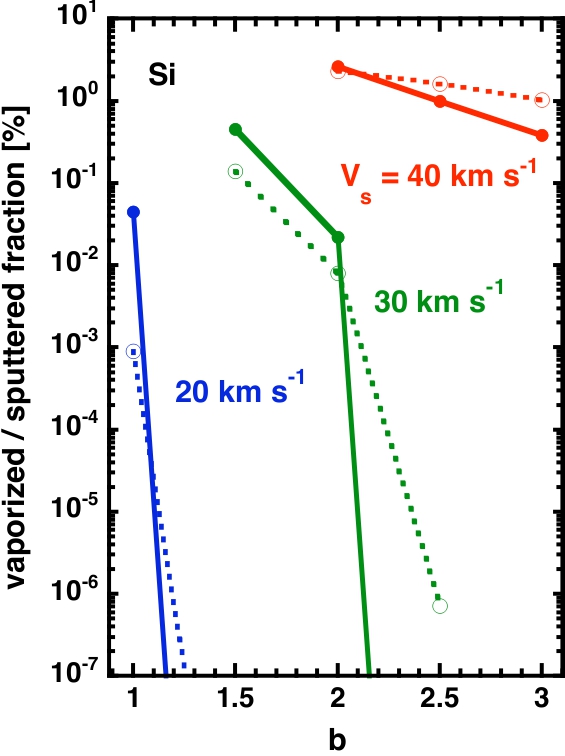| EPoS Contribution |
|
Shocks in dense clouds - The effect of grain-grain processing on SiO emission
Sibylle Anderl IPAG, Grenoble, FR | |
| Jets and molecular outflows occurring in the earliest phases of star formation impact the parental cloud by generating shock fronts that favour endothermic chemical reactions as well as the processing of dust grains. This processing of grain material leads to characteristic enhancements in the gas-phase abundances of otherwise heavily depleted species. One prominent example is SiO, whose formation is almost completely due to dust processing in shocks while its emission is only minimally contaminated by ambient swept-up gas. Spectral SiO observations are therefore frequently used to constrain the structure and origin of molecular jets from the youngest Class 0 protostars and to study molecular outflows from high-mass young stellar objects. The interpretation of such observations relies on the modelling of shocks and their associated mechanisms of releasing Si-bearing species from dust grains. Among these mechanisms, gas-grain interactions (e.g. sputtering and adsorption) have been established as important ingredients in shock modelling. However, it was shown that grain-grain interactions, i.e. shattering and associated vaporization, can bear equal importance for the release of SiO into the gas phase, especially for continuous magnetohydrodynamic (C-type) shocks in high density environments. Building on these findings, we have developed a recipe for implementing the effects of shattering and vaporization into a 2-fluid shock model. This implementation was combined with an LVG-based modelling of molecular line radiation transport. Using this combined model we were able to explore the observational consequences of different dust-processing scenarios. We could show that grain-grain processing has a strong influence on C-type shocks for a broad range of shock parameters. Vaporization increases the intensity of SiO rotational lines while the column density of shocked gas is reduced compared to models without grain-grain processing. Accordingly, these effects should be considered in the interpretation of SiO observations in high-density protostellar jets and outflows. | |
 | |
| Caption: The fractions of Si released from grain cores in our model with grain-grain processing and Si only in grain cores by vaporization (full lines) and sputtering (broken lines), for shock velocities Vs = 20 km/s (blue), Vs = 30 km/s (green), and Vs = 40 km/s (red) at a pre-shock density of 105 cm-3, as functions of the magnetic field parameter, b, in B [muG] = b sqrt(nH [cm-3]). This figure shows that the contribution of vaporization to the release of Si is significant for small values of the magnetic field if grain-grain processing is considered. | |
| Collaborators: V. Guillet, IAS, Orsay, FR G. Pineau des Forets, IAS/LERMA, Orsay/Paris, FR D.R. Flower, U Durham, UK |
Key publication
Suggested Sessions: Protostellar Outflows |

